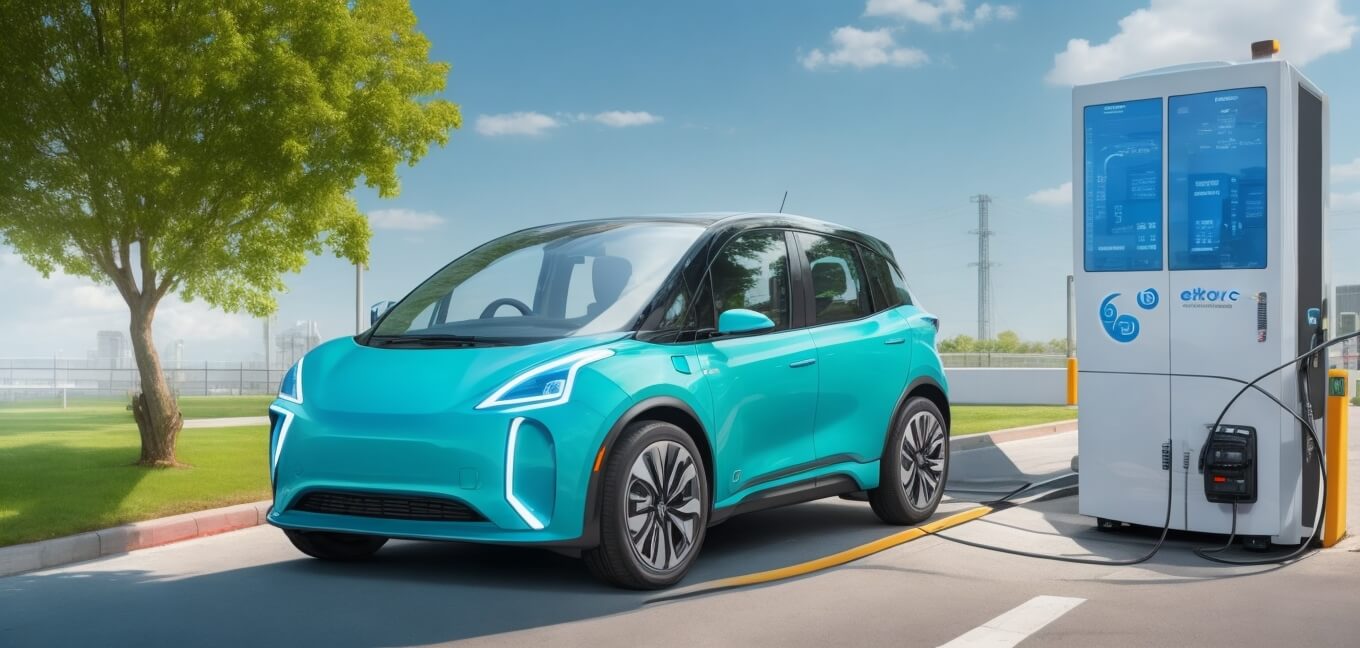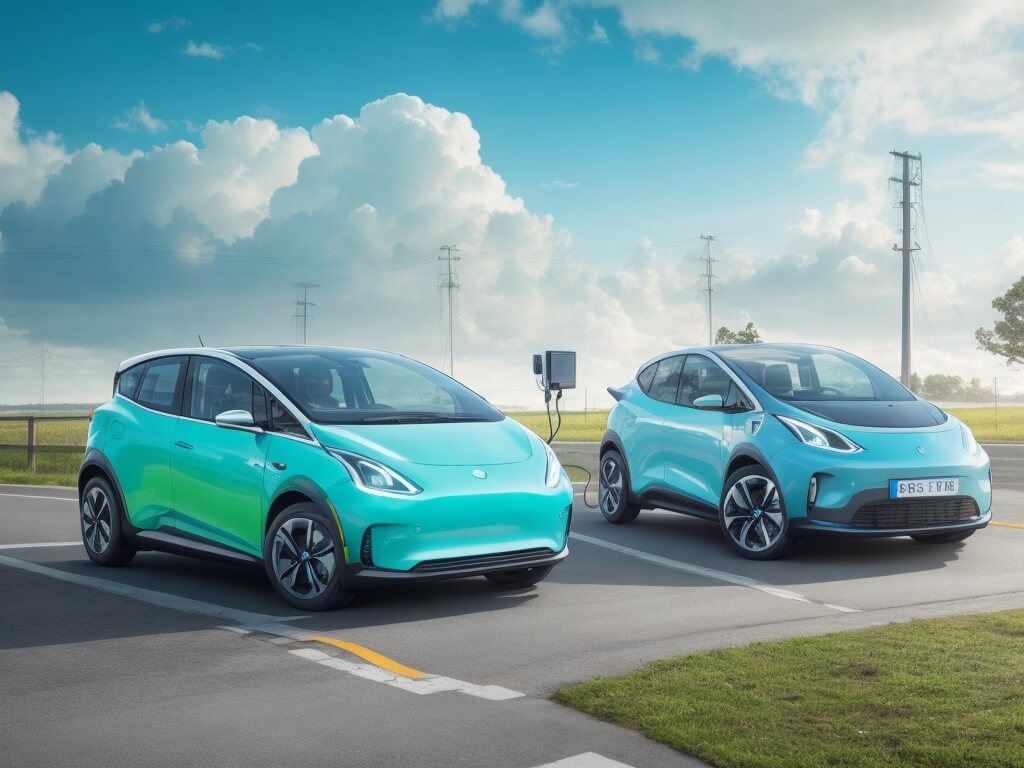
The automotive industry has undergone a remarkable transformation. The shift towards electric vehicles (EVs) has not only revolutionized the way we think about transportation but has also brought sustainability to the forefront. While EVs are celebrated for their eco-friendly nature due to zero tailpipe emissions, there’s a hidden aspect of sustainability within these vehicles that often goes unnoticed — the delicate balance between metal and plastic components.
The Marriage of Metals and Plastics
When envisioning electric vehicles (EVs), we often conjure images of sleek, futuristic machines silently gliding along the road. While the electric powertrain is undoubtedly the star of the show, the materials used in EV manufacturing are pivotal in reducing the vehicle’s overall carbon footprint.
Traditionally, internal combustion engine (ICE) vehicles have predominantly relied on metals such as steel and aluminum in their construction. However, the landscape is rapidly evolving with electric vehicles taking center stage. EVs are rewriting the script by incorporating a substantial number of plastic components. This strategic shift towards plastics is driven by two primary objectives: weight reduction and increased energy efficiency.
Weight reduction is paramount in the pursuit of optimal efficiency and range for electric vehicles. Herein lies the significance of plastics. Unlike metals, plastics are lightweight materials that can significantly contribute to reducing the overall weight of an EV. A lighter vehicle demands less energy to move, ultimately resulting in extended range and improved overall energy efficiency.
This reduction in weight also has a profound impact on the vehicle’s handling and performance. Electric vehicles that strike the right balance between metal and plastic components often deliver a smoother and more responsive driving experience. This, in turn, enhances the appeal of EVs, enticing more consumers to transition to sustainable transportation.
Weight Reduction for Enhanced Efficiency
One of the paramount challenges in electric vehicle (EV) design is to achieve maximum efficiency and range on a single charge. This is where the strategic use of plastics becomes a game-changer. In stark contrast to metals, plastics are renowned for their lightweight properties, making them instrumental in reducing the overall weight of an EV. This reduction in weight is pivotal for enhancing the EV’s performance on multiple fronts.
A lighter EV demands less energy to propel, resulting in an extended range on a single charge. This directly addresses the ‘range anxiety’ often associated with electric vehicles. With a judicious integration of lightweight plastics, EV manufacturers can offer consumers the confidence to travel longer distances without the need for frequent recharging. As a result, electric vehicles become not just an environmentally conscious choice but also a practical one for daily commuting and long-distance journeys.
The positive impact of weight reduction isn’t limited to range alone. It also influences the vehicle’s handling and overall performance. Electric vehicles designed with a well-balanced combination of metal and plastic components can deliver a smooth, agile, and responsive driving experience. This improved handling, combined with the instant torque of electric motors, makes for an enjoyable and engaging driving experience that is often likened to gliding on the road.
Battery Enclosures and Plastics
One of the most critical aspects of electric vehicle (EV) sustainability lies in the design and materials used for the battery enclosure. The battery pack is undeniably the heart of an EV, and its performance directly influences the vehicle’s range, efficiency, and overall longevity. In this crucial arena, plastics are emerging as the preferred choice for battery enclosures, playing a vital role in enhancing sustainability.
Plastic battery enclosures serve as the first line of defense for the sensitive battery cells within an electric vehicle. These enclosures offer a multitude of benefits that directly contribute to the eco-friendliness and efficiency of EVs.
Plastics boast excellent insulation properties. This characteristic is instrumental in maintaining the stable operating temperatures required for optimal battery performance. By preventing extreme temperature fluctuations, plastic enclosures ensure that the battery operates within its ideal temperature range. This is critical for preserving the battery’s efficiency and longevity, as extreme temperatures can lead to capacity degradation and reduced overall lifespan.
Plastics exhibit remarkable resistance to corrosion, a quality that is invaluable in an environment where batteries are subjected to various environmental factors. The ability to resist corrosion not only safeguards the battery but also reduces maintenance requirements, further lowering the environmental impact associated with servicing and replacing battery components.
The extended lifespan of electric vehicle batteries due to the use of plastic enclosures significantly reduces the need for frequent replacements. This translates into fewer discarded batteries, ultimately minimizing waste and contributing to a more sustainable approach to EV ownership.
Recycling and Circular Economy
Sustainability in the realm of electric vehicles (EVs) transcends the materials used in manufacturing; it extends to the vehicle’s entire lifecycle, including its eventual end-of-life. EV manufacturers are now placing a significant emphasis on designing vehicles with recycling and a circular economy in mind. This forward-thinking approach involves the use of materials that can be easily disassembled and recycled when the vehicle reaches the end of its operational life.
Plastics, when thoughtfully chosen, present a compelling advantage in this context. Compared to certain metals, plastics can be more readily recycled, and they are increasingly becoming the material of choice for eco-conscious EV manufacturers. But why are plastics favored in the quest for a circular economy?
Plastics are highly amenable to recycling processes. Innovations in plastic recycling technologies have made it feasible to not only recycle but also repurpose plastic components into new vehicle parts. This approach is a pivotal step toward a circular economy, where resources are conserved and waste is minimized.
Repurposing plastics into new vehicle parts reduces the demand for virgin materials, thereby conserving valuable resources and lessening the environmental impact of electric vehicle production. This sustainable approach aligns with the overarching goal of reducing carbon emissions and minimizing the ecological footprint of EV manufacturing.
The flexibility of plastics allows for innovative and eco-friendly design solutions. Manufacturers can create recyclable plastic components that are durable, lightweight, and tailored to specific EV requirements, contributing to the efficiency and performance of the vehicle throughout its life.

